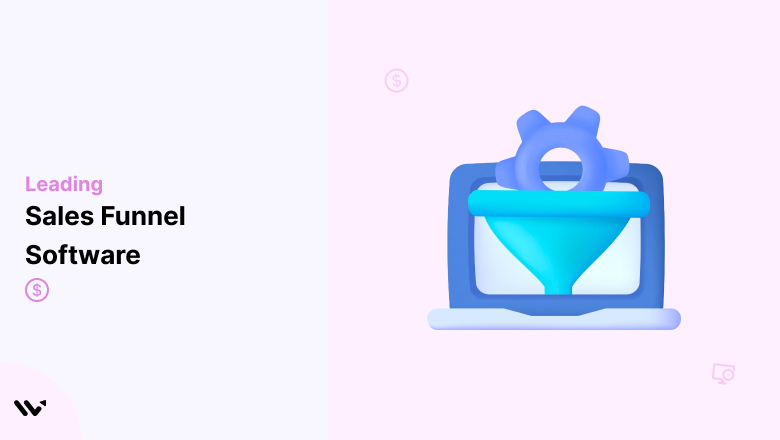So you want to increase sales and skyrocket conversions in 2025?
You’re in the right place! Today I’m going into the world of sales funnel software and I’m not going to give you an AI generated listicle.
I’m giving you the inside info on the best sales funnel software I’ve personally used and how they can help your online business.
And don’t worry, I won’t bore you with technical mumbo jumbo. We’ll break it down step by step so even if you’re a complete newbie to sales funnels you’ll be a pro by the end of this post.
Let’s get started!

What is a Sales Funnel?
A funnel. Wide at the top, narrow at the bottom, right? That’s what a sales funnel is.
It’s the journey your website visitors take from the moment they find your business to the point where they become paying customers.
At the top you have a lot of potential customers. As they move through the funnel some drop off but those who remain get more and more interested and qualified.
Your goal? To get as many people through the funnel as possible and convert them into customers.
Why You Need Sales Funnel Software Tools
Now you might be thinking, “Can’t I just create a sales funnel manually?” Sure you can.
But let’s be real, it’s a time consuming process. And in today’s fast paced world who has time to manually track leads, send emails and analyze data?
That’s where sales funnel software tools come in. These powerful tools automate the whole process so you can focus on what really matters – growing your business.
They help you generate leads, nurture customer relationships and optimize your marketing efforts to increase sales.
Benefits of Sales Funnel Software
Still not convinced? Here are just a few of the benefits:
More efficiency: Automate your sales process and marketing campaigns and save time and effort.
More leads: Capture more leads and convert them into customers.
Better customer experience: Give your customers a seamless and personalized experience.
Better data: Track your progress and see where you can improve.
More conversions: Optimize your funnels to get more conversions.
Marketing automation: Streamline your email campaigns and customer interactions, enhance lead generation, deliver personalized content, and integrate with various software tools to boost engagement and conversion rates.
Okay let’s get into those free and affordable AI powered sales funnel software options.
Remember these are the tools that can really help you automate your processes and scale your business without spending a fortune.
Free Sales Funnel Software
You’ll be surprised at what you can do with free sales funnel software.
These are great for getting started and learning the basics of funnel building.
Here’s a closer look:
1. Systeme.io
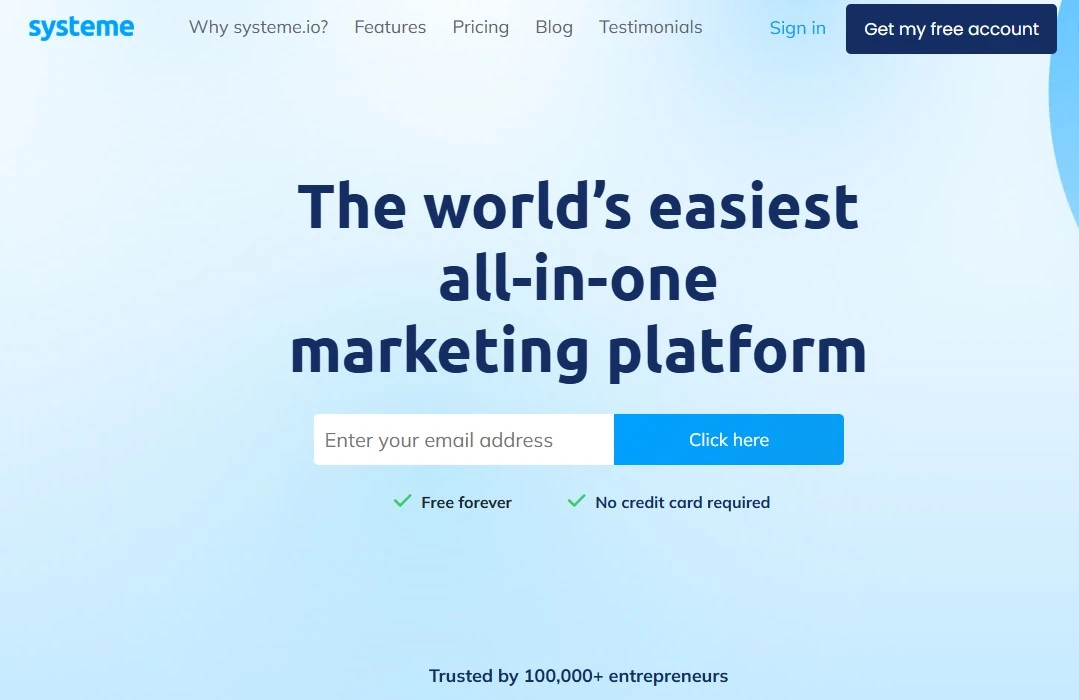
Systeme.io is like the Swiss Army knife of free sales funnel software, allowing you to quickly build sales funnels and create landing pages. Seriously this platform has everything you need to get started and it’s super easy to use.
Here’s a quick rundown of what you can do with Systeme.io:
Build landing pages: Create beautiful high converting landing pages with their drag and drop builder. No coding skills required!
Send email campaigns: Automate your email marketing with pre-built templates and sequences.
Host online courses: Share your knowledge and make money by creating and selling online courses.
Set up membership sites: Build a community and give your members exclusive content.
Run webinars: Connect with your audience in real-time and generate leads.
And the best part? Systeme.io has a completely free plan with no hidden fees.
You can have unlimited contacts, send unlimited emails and even create your own affiliate program.
It’s perfect for entrepreneurs and small business owners on a tight budget.
Pricing:
- Start $27/Month
2. Involve.me
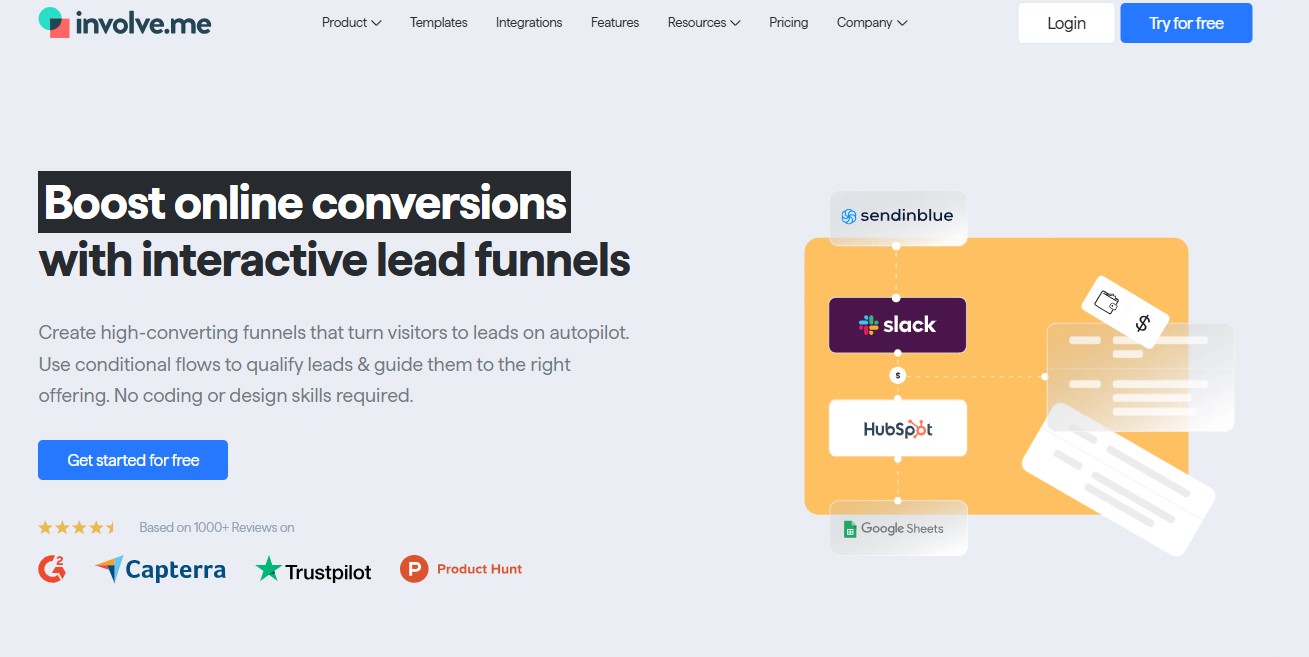
Want to add some interactive content to your sales funnel? Involve.me is the tool for you. This platform allows you to create quizzes, surveys, calculators and more.
It’s great for capturing leads, segmenting your audience and personalizing your marketing.
Here’s why I love Involve.me:
More engagement: Interactive content is way more engaging than static forms. People love to participate and share their results.
Get valuable data: Use quizzes and surveys to learn more about your audience and their needs.
Segment your leads: Automatically segment your leads based on their answers and send more targeted messages.
More conversions: Personalized content and targeted offers equals higher conversions.
Involve.me has a free plan that allows you to create unlimited projects and collect up to 100 submissions per month.
It’s great for testing the water and see how interactive content can work for your sales funnel.
Pricing:
- Start $49/Month
3. lyzr.ai
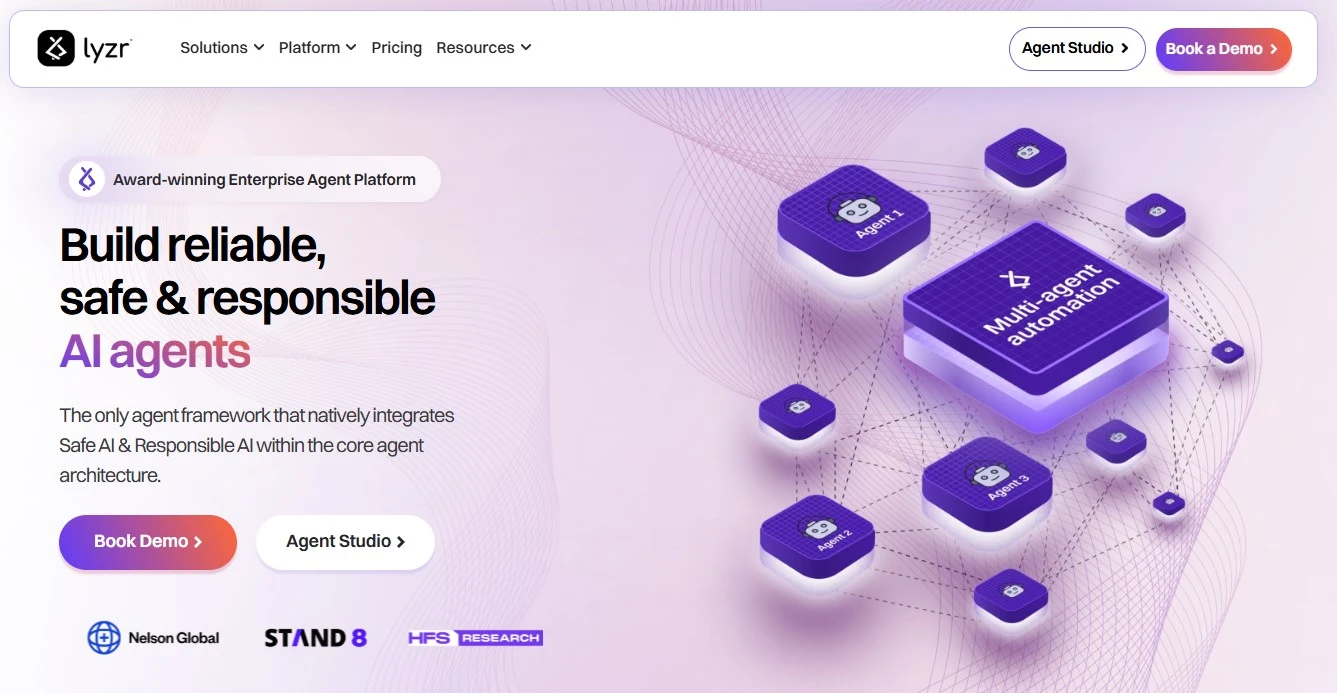
lyzr.ai is a new kid on the block but I’m loving it.
This AI powered platform helps you analyze your marketing assets and find areas to improve.
Here’s how it works:
Connect your marketing data: Connect lyzr.ai with your Google Analytics, Facebook Ads and other marketing platforms.
Get AI powered insights: lyzr.ai will analyze your data and give you actionable recommendations to improve your marketing performance.
Optimize your campaigns: Use the insights to optimize your campaigns, target better and increase your ROI.
lyzr.ai has a free plan that gives you access to basic reports and recommendations.
It’s a great way to get started with AI powered marketing analysis and see how it can help your business.
Pricing:
- Start $19/Month
4. HubSpot Lead Management
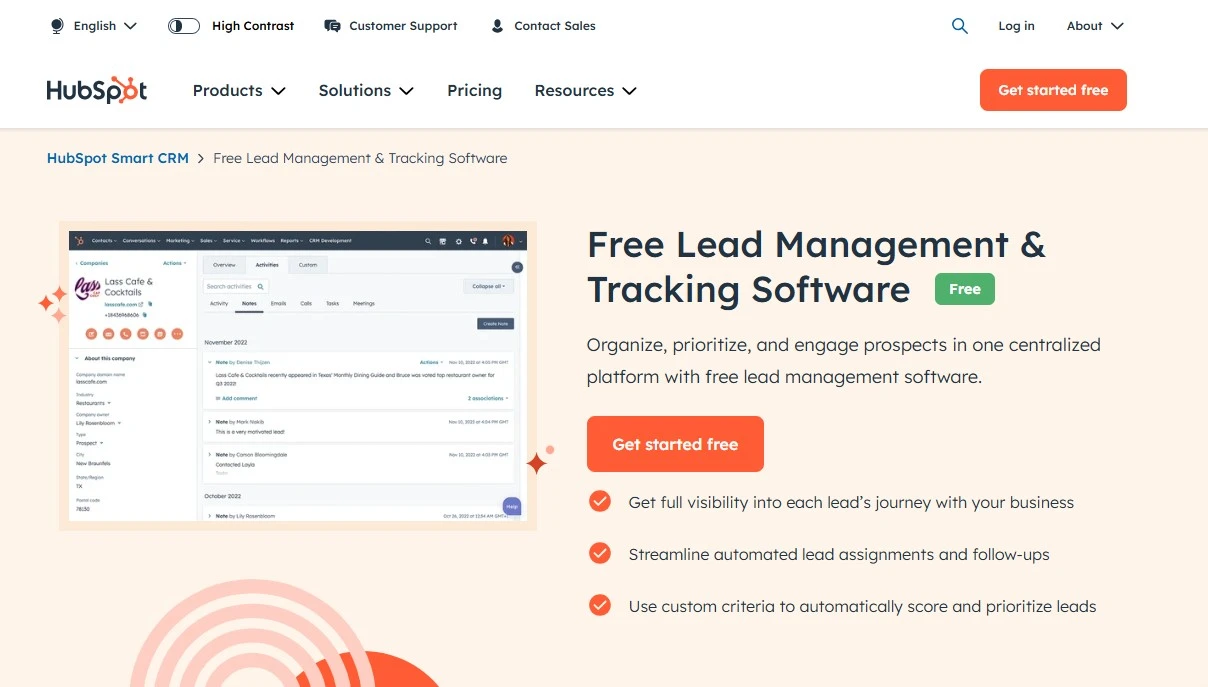
HubSpot is a well known name in the marketing world and for good reason. Their free CRM software is a powerful tool to manage your contacts, track your leads and automate your marketing.
Here’s what you can do with HubSpot’s free CRM tools:
Manage your contacts: Store all your contact information in one place.
Track your leads: Follow your leads as they move through your sales funnel.
Send email campaigns: Create and automate email campaigns to nurture your leads.
Monitor your website activity: See which pages your leads are visiting and track their engagement.
HubSpot’s free CRM is great for businesses that want a full featured solution without the big price tag.
Pricing:
- Start $20/Month
5. Groovefunnels
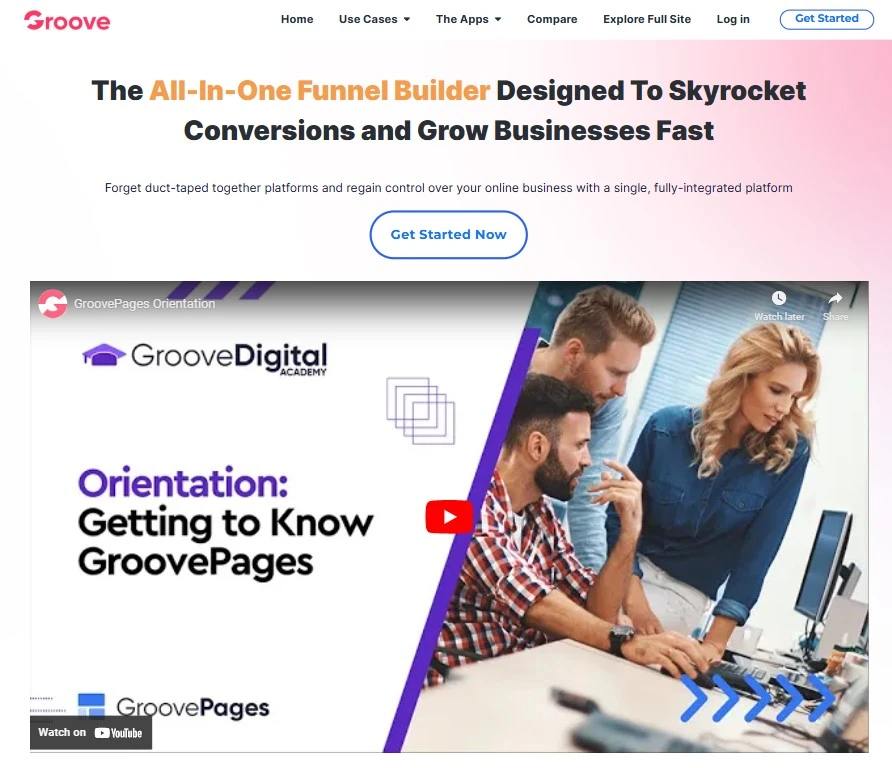
Groovefunnels is another all-in-one platform with a free plan, known for being one of the top sales funnel builders. It’s got a lot of features including website builder, landing page builder, email marketing software and more.
Here’s a quick rundown:
Build websites and landing pages: Create professional looking websites and landing pages with their drag and drop builder.
Send email campaigns: Automate your email marketing with pre built templates and sequences.
Sell products and services: Set up an online store and sell your products or services from your website.
Create membership sites: Build a community and provide exclusive content to your members.
Groovefunnels free plan is great to get started with all the tools you need to build an online business.
AI Sales Funnel Software for under $100
Ready to level up your sales funnels with AI?
These affordable options have powerful features to help you personalize your marketing, automate your tasks and increase your conversions.
6. ConvertFlow
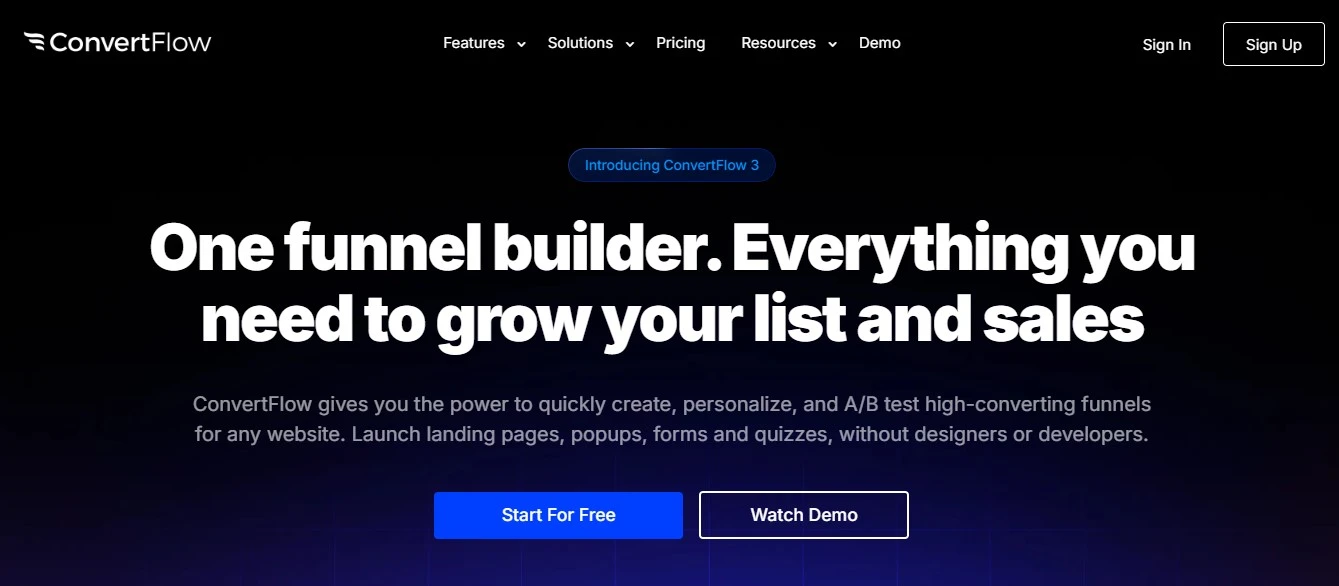
ConvertFlow is a great tool to create personalized experiences for your website visitors. It uses AI to analyze user behavior and deliver targeted messages that convert.
Here’s what I like about ConvertFlow:
Personalized popups: Show targeted popups based on user behavior, such as exit intent, scroll depth or time on page.
Dynamic content: Show different content to different visitors based on their interests and preferences.
Personalized forms: Create forms that adapt to user input, for a better experience.
A/B testing: Test different versions of your popups and forms to see what works best.
Pricing:
- ConvertFlow has a free plan with limited features but their paid plans are very affordable, starting at just $22/month.
7. Pipedrive
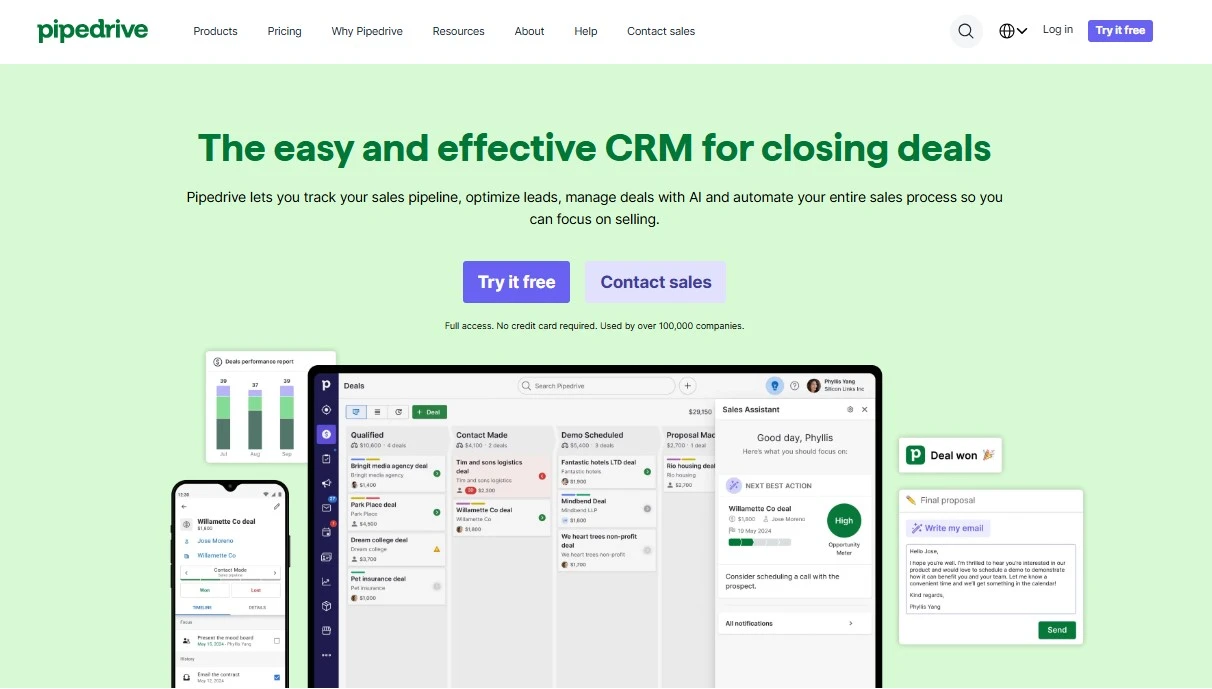
Pipedrive is a CRM for sales teams. It helps you manage your sales pipelines, track deals and automate tasks.
Here’s why Pipedrive is good for sales teams:
Visual pipeline management: See your deals move through your pipeline in a clear and visual way.
AI sales assistance: Get insights and recommendations to help you close more deals.
Automated tasks: Automate repetitive tasks like sending follow-up emails or scheduling calls.
Integrations: Connect Pipedrive with your other favourite tools like Google Apps and Mailchimp.
Pricing:
- Pipedrive has a 14 day free trial and their paid plans start at $12/user/month.
8. Kartra
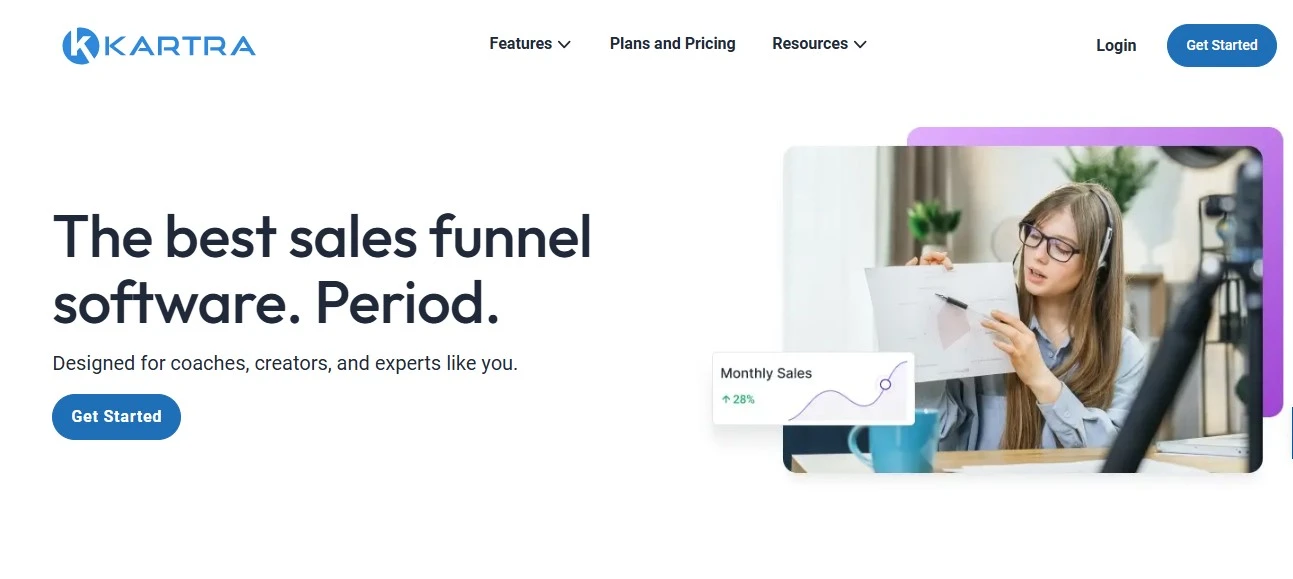
Kartra is another all in one platform that has many features including landing pages, email marketing, membership sites and a helpdesk.
But what sets Kartra apart is its AI features:
Behavioral adaptive marketing: Show personalized content and offers based on user behavior.
Predictive lead scoring: Identify your best leads and prioritize your sales efforts.
Automated email sequences: Send targeted email sequences based on user actions and engagement.
Pricing:
- Kartra has a 30 day trial for $1 and their paid plans start at $119/month.
9. ClickFunnels
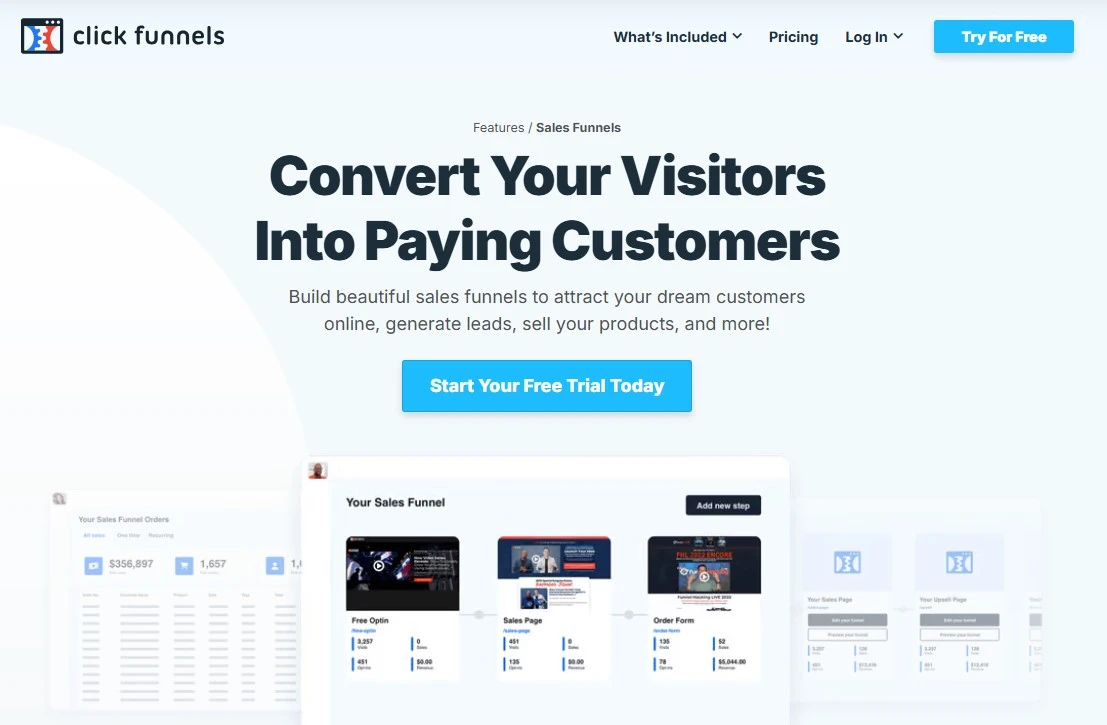
ClickFunnels has earned its reputation as a top sales funnel builder and a highly effective funnel building tool for good reason.
It’s a powerful platform that combines ease of use with a lot of features to help you create high converting sales funnels.
Here’s what makes ClickFunnels stand out:
Drag-and-Drop Builder: Build landing pages and funnels without coding.
Template Library: Choose from hundreds of pre-designed templates.
Sales Funnel Blueprints: Get complete blueprints for different funnel types.
A/B Testing: Test different elements of your funnels.
While ClickFunnels doesn’t have as many explicit AI features as some other platforms, its user friendly interface, huge template library and many features make it a good tool to build high converting sales funnels.
Pricing:
- ClickFunnels has a 14 day free trial and paid plans starting at $81/month.
10. Getresponse
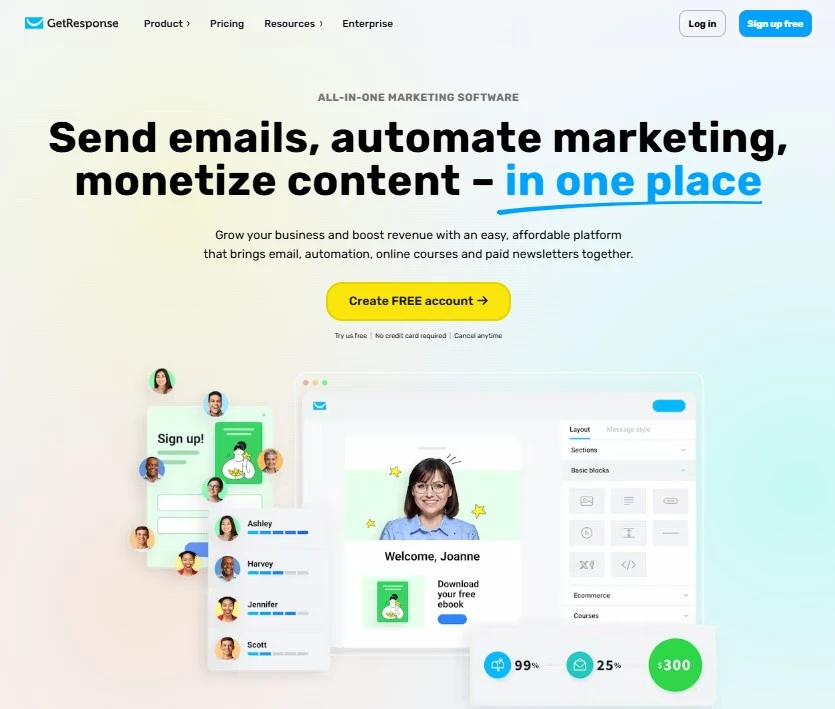
Getresponse is good for businesses that want to combine email marketing campaigns with website and landing page building.
They also have AI features:
Website personalization: Personalize your website content based on user behavior.
Email automation: Automate your email marketing with pre-built templates and sequences.
A/B testing: Test different versions of your emails and landing pages.
Pricing:
- Getresponse has a free plan with limited features and paid plans start at $18.99/month.
11. Funnel.io
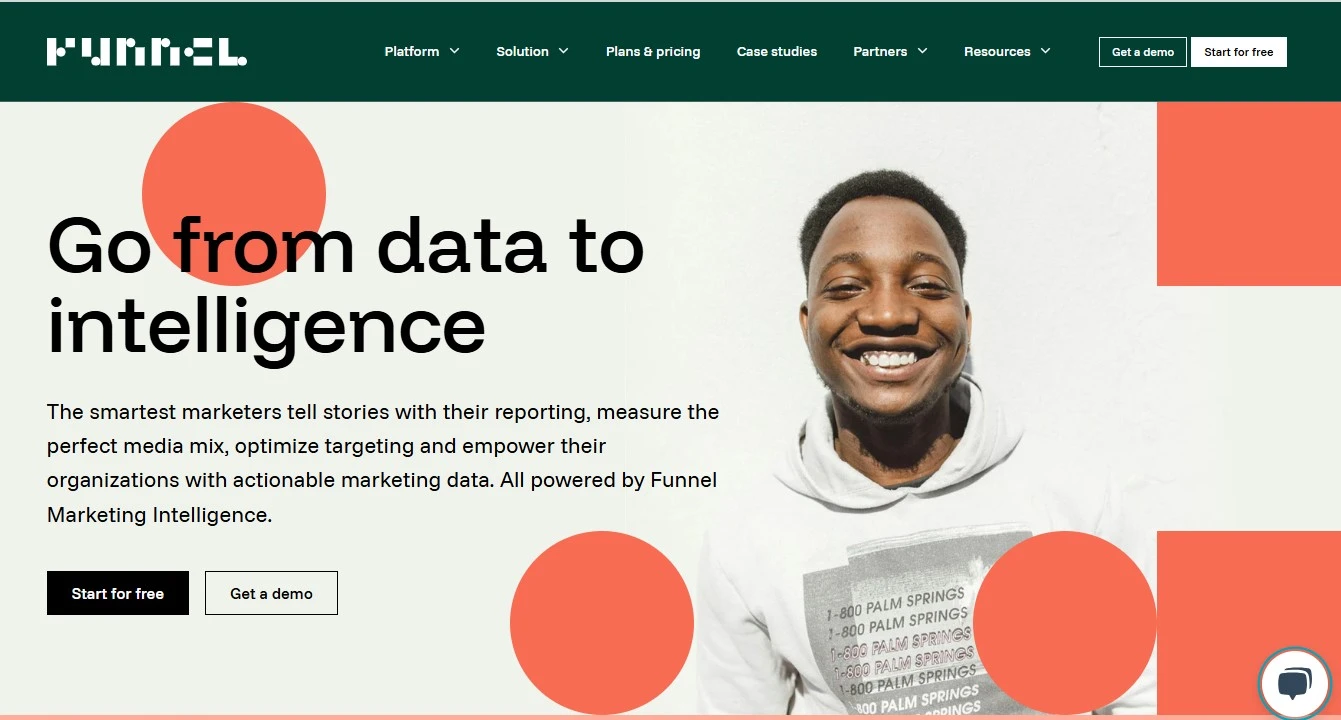
Funnel.io is data driven funnel building software to track your marketing performance across all channels.
It integrates with all your favorite marketing tools and gives you valuable insights to optimize your marketing funnels.
Here’s what I like about Funnel.io:
Data aggregation: Collect all your marketing data in one place.
Customizable reports: Create custom reports to track your metrics.
Integrations: Connect Funnel.io with your other tools like Google Analytics and Facebook Ads.
Pricing:
- Funnel.io has a 14 day free trial and paid plans start at $199/month.
Which is the Best Sales Funnel Software to Choose?
With so many sales funnel software out there, it can be hard to choose one. Other sales funnel software often complicates the process, but our recommended tools are designed for simplicity and ease of use.
Here are a few things to think about:
How much are you willing to spend?
What features do you need?
How comfortable are you with new software?
Small business or enterprise?
Once you’ve thought about these, you can start to narrow down your options.
Try out a few before you decide.
Most sales funnel software has a free trial or free plan so you can try before you buy.
How to Build High Converting Funnels?
Okay, let’s get to the good stuff. You’ve got your new sales funnel software but now what?
How do you actually build a funnel that turns those casual website visitors into loyal, paying customers?
Don’t worry, I’m here to walk you through it. Building high converting funnels is an art and science but with the right approach you can create a well oiled machine that drives sales and profits.
The Customer Journey
Before we get into the nitty gritty, let’s step back and look at the customer journey.
It’s not just about getting someone to buy something; it’s about understanding their needs, building a relationship and guiding them to a solution that meets those needs.
Your sales funnel is a map that takes your potential customers from the moment they first touch your brand all the way to a purchase (and beyond!).
Each stage of the funnel is a different step in their journey and your job is to provide the right content and experience at each stage to keep them moving forward.
The Four Stages of a High Converting Funnel

Now let’s break down the four stages of a high converting sales funnel:
1. Awareness: Make a Great First Impression
This is the top of your funnel where you cast a wide net to attract potential customers.
Think of it like a first date – you want to make a great impression and pique their interest.
Here’s how to nail the awareness stage:
Targeted Content: Create content that addresses your ideal customer’s pain points and interests. This could be blog posts, videos, social media content, infographics or even interactive quizzes.
SEO Optimization: Make sure your content is SEO optimized so people can find you when they’re searching for solutions to their problems.
Paid Advertising: Use paid advertising platforms like Google Ads or Facebook Ads to reach a bigger audience and drive traffic to your website.
Social Media Engagement: Be active on social media where your target audience hangs out. Share content, comment, build relationships.
2. Interest: Build a Connection
Think of this stage as getting to know someone better and showing them why they should care about what you have to offer.
Here’s how to build interest:
Lead Magnets: Offer freebies like ebooks, checklists or webinars in exchange for their email address. This allows you to capture leads and start building an email list.
Email Marketing: Send email sequences that provide value, build relationships and position you as an expert in your field.
Educational Content: Continue to create high quality content that educates and informs your audience. This could be blog posts, videos, case studies or white papers.
Social Proof: Show testimonials, reviews and case studies to build trust.
3. Consideration: Addressing Concerns and Objections
At this stage your leads are getting warm. They’re considering your offer but they may still have questions or concerns.
Your job is to address those concerns and overcome any objections they may have.
Here’s how to handle the consideration stage:
Product Demos: Offer product demos or free trials so your leads can get a taste of your product or service.
Comparison Charts: Create comparison charts that show the benefits of your product or service vs your competitors.
FAQ Pages: Answer common questions and concerns on a dedicated FAQ page.
Customer Support: Provide great customer support to answer questions and address concerns your leads may have.
4. Action: Close the Deal
This is the bottom of your funnel, the final moment. Your leads are ready to buy and your job is to make it easy for them to do so.
Here’s how to optimize the action stage:
Clear CTAs: Use a clear and bold CTA that tells your leads what to do (e.g. “Buy Now”, “Sign Up Free”, “Download Now”).
Simple Checkout: Make sure your checkout process is simple, secure and user friendly. Minimize the number of steps to complete a purchase.
Multiple Payment Options: Offer multiple payment options to cater to different preferences.
Limited Time Offers: Create urgency with limited time offers or discounts.
After the Sale: Nurturing Customer Relationships
Remember, building a high converting funnel isn’t just about the sale; it’s about building long term customer relationships.
Once someone has bought, continue to nurture that relationship with:
Post Purchase Follow Up: Send a thank you email, offer support and ask for feedback.
Loyalty Programs: Reward repeat customers with loyalty programs or exclusive offers.
Ongoing Engagement: Continue to provide value and engage with your customers on social media.
Follow these steps and continuously optimize your funnel and you’ll have a system that attracts, engages and converts leads into customers.
How WiserNotify Increases Your Sales Funnel Conversions
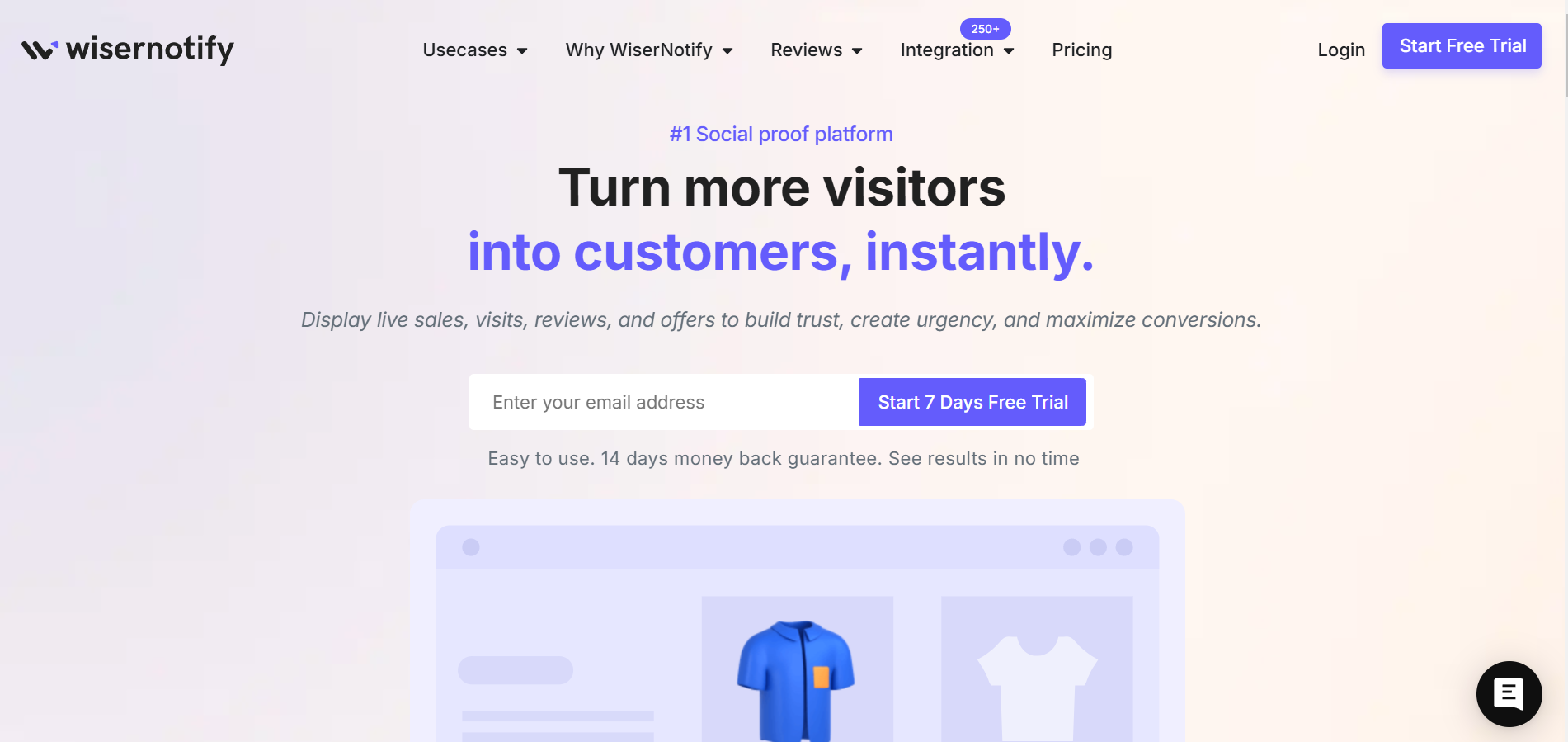 So you’ve built a sales funnel, you’re driving traffic and you’re seeing some conversions.
So you’ve built a sales funnel, you’re driving traffic and you’re seeing some conversions.
But what if I told you there’s a way to multiply those results and supercharge your conversions even more?
That’s where WiserNotify comes in. This tool uses the power of social proof to build trust, create urgency and encourage visitors to take action.
Think of it as your magic bullet to turn those browsers into buyers.
Social Proof
We’re social creatures. We look to others for cues on how to behave, what to buy and who to trust.
That’s the basic principle of social proof. When we see others are doing something, we do it too.
WiserNotify uses this psychological principle by showing real-time notifications of customer activity on your website.
These notifications can include:
Recent Sales: Show visitors others are buying your products or services.

Sign-ups and Registrations: Show the number of people who have signed up to your email list or registered for an event.

Live Visitor Count: Show the number of people currently on your website, to create a sense of buzz.

Social Media Shares: Show the number of times your content has been shared on social media, to prove its value.
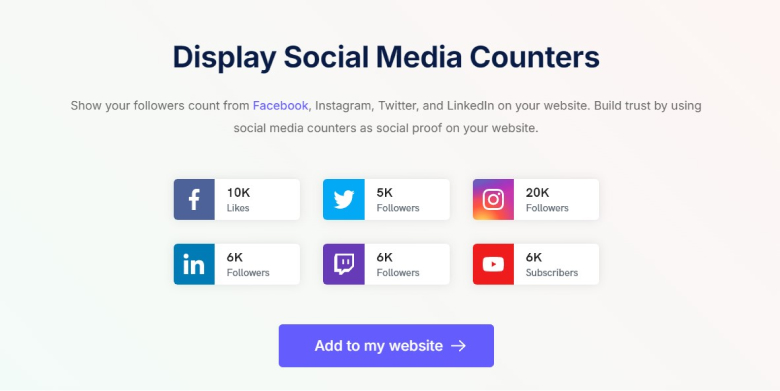
Positive Reviews: Show happy customer testimonials.
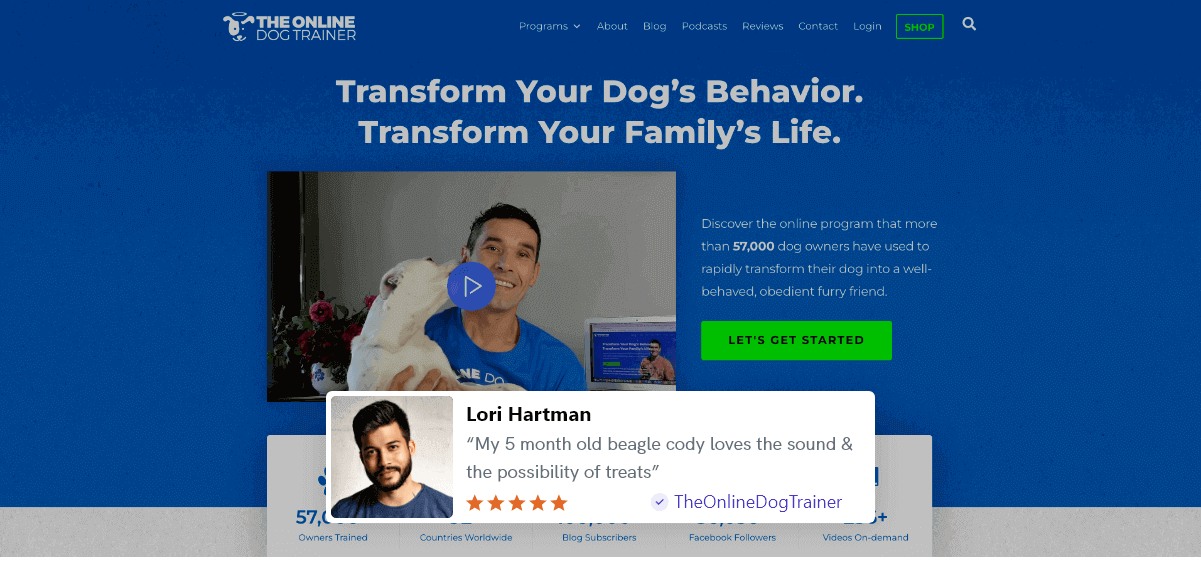
Countdown timers: You’ve seen this, right?
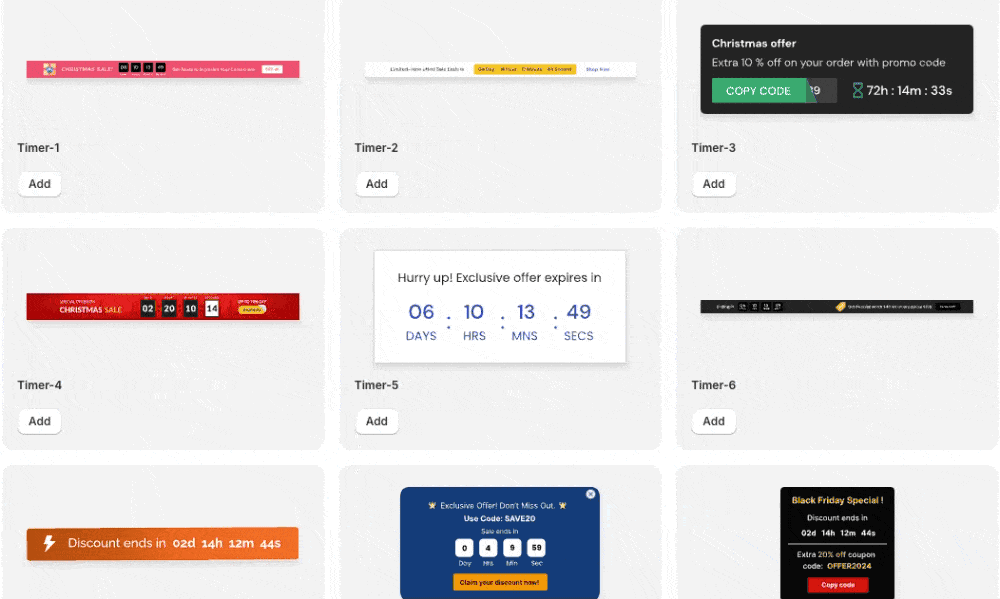
Why WiserNotify Works
Here’s how WiserNotify can supercharge your sales funnel conversions:
1. Builds Trust and Credibility
When visitors see others are buying from you, it builds trust and credibility.
They’re more likely to believe your product or service is worth their investment.
2. Creates Urgency and Scarcity
WiserNotify can create urgency by showing notifications like “Only 3 left in stock!” or “5 people are viewing this product.”
So visitors take action before it’s too late.
3. Reduces Buyer’s Hesitation
Many people hesitate to buy because they’re not sure if it’s the right decision.
WiserNotify helps overcome this hesitation by showing others have already made the same decision and are happy with their purchase.
4. Better Customer Journey
By placing WiserNotify notifications throughout your sales funnel you can guide visitors to the desired action, whether it’s signing up to your email list, downloading a lead magnet or buying.
5. More Engagement and Time on Site
WiserNotify notifications will grab visitors attention and make them spend more time on your website, increasing the chances of a conversion.
Easy to Use, Big Results
(GIF showing Step by step)
The best part about WiserNotify is it’s super easy to use. You just copy and paste a snippet of code on your website and you’re done.
No tech skills required!
WiserNotify has a free plan with limited features and affordable paid plans starting at $48/year.
It’s a small cost for big results in terms of conversions and revenue.
So try WiserNotify out if you want to supercharge your sales funnel conversions.
It’s a tool that can help you use the power of social proof to drive sales and grow your business.
How Can AI Help?
Okay, let’s talk about the real magic in the world of sales funnels: Artificial Intelligence.
AI is no longer science fiction; it’s here, it’s powerful and it’s ready to change the way you build and optimize your sales funnels.
Remember those AI-powered sales funnel software tools we talked about earlier?
They’re not just a gimmick; they’re filled with intelligent features that can automate, personalize and boost your conversions.
Here’s a deeper dive into how AI can be your secret to sales funnel success:
1. Hyper-Personalization
Think about the last time you went to Amazon. Did you notice how the website seemed to know exactly what you were looking for?
That’s AI in action, analyzing your past behavior and recommending products you’re most likely to buy.
You can apply the same to your sales funnels.
AI can analyze user data such as browsing history, past purchases and demographics to deliver content and offers that resonate with each individual.
This level of personalization can boost engagement and conversions.
Imagine this:
Dynamic Content:Your landing pages adapt to each visitor, showing them the most relevant information and offers based on their interests.
Personalized Product Recommendations: Instead of generic product suggestions your website shows products that match each visitor’s preferences.
Targeted Email Campaigns: Your email marketing goes beyond basic segmentation. AI analyzes user behavior to deliver highly targeted messages that speak directly to their needs and desires.
2. Conversational AI
Remember those annoying experiences with automated customer service systems that just didn’t understand your question?
AI-powered chatbots are a different animal. They can have natural, human-like conversations, answer questions, provide support and even qualify leads.
Here’s how AI chatbots can supercharge your sales funnels:
24/7 Availability
Your chatbots are always on, ready to assist visitors and answer questions, even outside of business hours.
Lead Qualification: Chatbots can ask qualifying questions to determine if a lead is a good fit for your product or service, saving you time and resources.
Personalized Recommendations: Based on the conversation chatbots can recommend relevant products or services, increasing the chances of a sale.
Better Customer Experience: By providing instant support and personalized guidance chatbots can improve the customer experience and build stronger relationships.
3. Predictive Analytics
Wouldn’t it be cool if you could predict which leads are most likely to become paying customers? AI can make that happen.
By analyzing historical data and user behavior AI can find patterns and predict future outcomes. This allows you to:
Prioritize Your Sales Efforts: Focus your time and resources on the leads that are most likely to convert, increase your efficiency and ROI.
Personalize Your Approach: Customize your communication and offers based on the predicted conversion rate.
Identify High-Value Customers: Identify potential high-value customers early and nurture those relationships.
4. Content Generation
Having trouble creating content for your landing pages and email campaigns? AI can help.
While AI can’t replace human creativity entirely, it can help with:
Headlines and Subject Lines: AI can analyze your content and generate headlines and subject lines that grab attention.
Product Descriptions: AI can write product descriptions that highlight key features and benefits.
Social Media Posts: AI can create social media posts that resonate with your audience.
5 Mistakes to Avoid When Building Funnels
You’re almost a funnel building master! But before you go out and conquer the world of the online marketing and sales let me warn you about a few common mistakes to avoid:
1. Ignoring User Experience
A bad checkout process, confusing navigation or slow loading times can all lead to abandoned carts and lost sales.
Make sure your funnels are user-friendly and smooth.
2. Not Measuring Your Results
You can’t improve what you don’t measure. Measure your key metrics: conversion rates, bounce rates, customer lifetime value.
This will help you identify areas to improve and optimize your funnels for maximum results.
3. Overcomplicating
Keep it simple! Don’t overwhelm your leads with too many options or steps. A simple sales funnel converts more.
4. Forgetting the Follow-Up
Just because someone doesn’t buy from you right away doesn’t mean they’re not interested.
Use email marketing and retargeting campaigns to nurture your leads and keep your brand top of mind.
Done
So there you have it – your 2025 sales funnel software guide!
Whether you’re a pro or a newbie there’s a sales funnel builder for you.
Try out different tools and strategies. And most importantly have fun! Building sales funnels is a creative process.
Go build some funnels! And if you have questions hit me up below.
